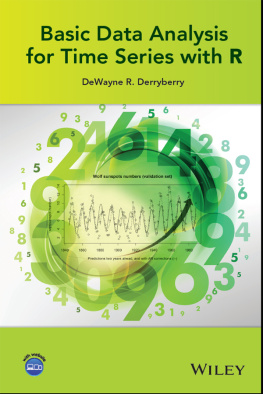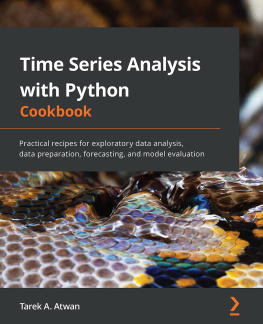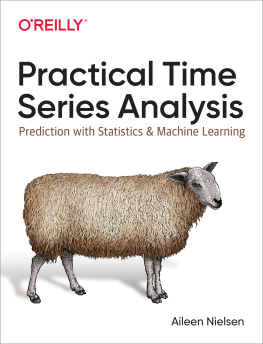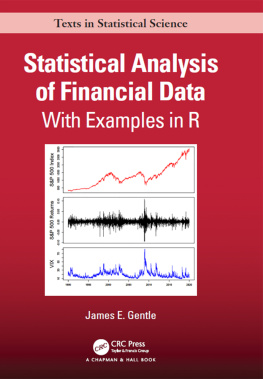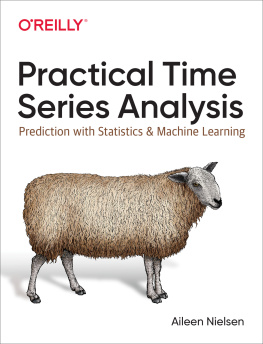
Copyright 2014 by John Wiley & Sons, Inc. All rights reserved.
Published by John Wiley & Sons, Inc., Hoboken, New Jersey.
Published simultaneously in Canada.
No part of this publication may be reproduced, stored in a retrieval system, or transmitted in any form or by any means, electronic, mechanical, photocopying, recording, scanning, or otherwise, except as permitted under Section 107 or 108 of the 1976 United States Copyright Act, without either the prior written permission of the Publisher, or authorization through payment of the appropriate per-copy fee to the Copyright Clearance Center, Inc., 222 Rosewood Drive, Danvers, MA 01923, (978) 750-8400, fax (978) 750-4470, or on the web at www.copyright.com. Requests to the Publisher for permission should be addressed to the Permissions Department, John Wiley & Sons, Inc., 111 River Street, Hoboken, NJ 07030, (201) 748-6011, fax (201) 748-6008, or online at http://www.wiley.com/go/permission.
Limit of Liability/Disclaimer of Warranty: While the publisher and author have used their best efforts in preparing this book, they make no representations or warranties with respect to the accuracy or completeness of the contents of this book and specifically disclaim any implied warranties of merchantability or fitness for a particular purpose. No warranty may be created or extended by sales representatives or written sales materials. The advice and strategies contained herein may not be suitable for your situation. You should consult with a professional where appropriate. Neither the publisher nor author shall be liable for any loss of profit or any other commercial damages, including but not limited to special, incidental, consequential, or other damages.
For general information on our other products and services or for technical support, please contact our Customer Care Department within the United States at (800) 762-2974, outside the United States at (317) 572-3993 or fax (317) 572-4002.
Wiley also publishes its books in a variety of electronic formats. Some content that appears in print may not be available in electronic formats. For more information about Wiley products, visit our web site at www.wiley.com.
Library of Congress Cataloging-in-Publication Data:
Derryberry, DeWayne R., author.
Basic data analysis for time series with R / DeWayne R. Derryberry, Department of Mathematics and Statistics, Idaho State University, Voise, ID.
pages cm
Includes bibliographical references and index.
ISBN 978-1-118-42254-0 (hardback)
1. Time-series analysisData processing. 2. R (Computer program language) I. Title.
QA280.D475 2014
001.42202855133dc23
2014007300
ISBN: 9781118422540
PREFACE
WHAT THIS BOOK IS ABOUT
- Real, often very messy, data
- Using the popular R programming language
- Both data analysis and mathematical exercises
- Modern principles of model selection and model building, such as information criteria and data splitting, and hypothesis testing, as well as a complete approach to model selection, independent of the criteria
- Graphical displays of the data
MOTIVATION
A few years ago I was asked to teach a class on time series. The students in the class would be undergraduate statistics majors, graduate mathematics majors, and graduate students from a variety of science departments around the campus. My major concern in the course was that by the end of the course, the students be able to actually analyze data. In fact, I am of the belief that any applied statistics course, upon completion, in which the best students cannot independently analyze data, is a waste of the student's time and money.
Although this sounds like a reasonable goal, it is surprising how inadequate most time series books look, given this task. Most time series books fall into two categories: books about mathematical models with data sets used to illustrate a mathematical idea, and books on forecasting with recipes for making short-term predictions.
The only presentation close to what I wanted was Chapter 15 of The Statistical Sleuth (2002) by Ramsey and Schafer. However, this chapter is limited to what we will come to denote the AR(1) model and lacks the mathematical details to go further.
There is a second motivation for the book. Statisticians lament the misuse and poor use of statistical methods in nonstatistical journals. Of course, in this regard, as Mark Twain would say, everyone complaints about it, but nobody does anything. In fact, most statisticians are too busy getting tenure and developing methods magnitudes of sophistication beyond what colleagues in nonstatistical journals are doing. Not many statisticians have made much effort toward translating the really basic ideas from decades ago into something nonstatisticians can use.
This book is a result of teaching a time series class twice. There are two ways this book is different from most other books on time series: (1) it is dated, there is nothing in this book that was not known by 1975, perhaps 1955 (in terms of mathematical and statistical theory) and (2) it is all about data. To the extent that this book is viewed as a generalization and extension of Chapter 15 of The Statistical Sleuth, it is a success.
REQUIRED BACKGROUND
The book presumes knowledge of linear algebra, data analysis, and basic computer programming. The book is aimed at two distinct audiences; as a textbook for a senior or slightly more advanced special topics course in statistics or as reference for statisticians who want to learn sufficient theory to analyze data with serial correlation, but have had little or no special training in time series. It is assumed that writing (a lot of) code is part of a modern applied statistics class at the senior level, and the student and instructor will write a lot of code if they use this book.
A COUPLE OF ODD FEATURES
In two cases (Wolf's sunspot numbers and Semmelweis), background material has been quoted from Wikipedia. In fact, the information cited is well known and citing Wikipedia requires no special permissions. Many of the data sets in the book come from simulations. Both graphs and numerical summaries are displayed. In such cases, the graphical display may have been revised several times in the course of writing the book. Rather than changing the numerical summaries each time, which would sometimes lead to extensive revisions, the author just left the first analysis and changed the graph with each new simulation. A gifted savant, as in the movie Rainman, might find some subtle mismatch between some graph of simulated data and the reported numerical values, but most of us would never detect any discrepancies.
ACKNOWLEDGMENTS
First and foremost, I must acknowledge the patient and gracious students who took my classes: Jeremy Farrell, Michael Chow, Megan Loveland, Anthony Lock-Smith, Gee Mellisa Pricilia, Yevgeniy Ptukhin, Christie Solomon (Spring 2011); Theo Barnhart, Leland Davis, Meghan Fisher, Noelle Guernsey, Michael Jacobson, Andrew Jensen, Christopher Tennant, Tyler Yazzie, Ted Owens, Garrett Castle, Anthony Wilson (Fall 2012). Students who take a class based only on notes have a difficult task. There is no table of contents, nor is there an index. Notes are full of errors, typos, and graphs with poor labeling. Page numbers are in constant flux. Sometimes, the students get to follow the instructor down dead ends (if properly done, this really is a good way to teach mathematics). On the other hand, for those who can handle a heavy cognitive load, there is something to be said for learning with the instructor instead of learning from the instructor. Garrett Castle also worked for me one school year helping get the book in the final form.
Next page
